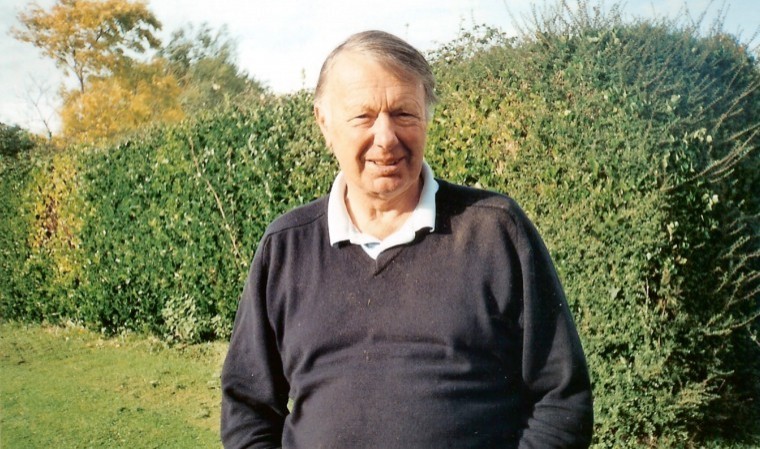We went up for a ‘big’ family birthday party in Northumberland before heading well north to Carnoustie in Angus, no, not for golf but to stay with a very old farmer friend, Tom Hay, never to fully retire despite being in his 95th year. A great curler but an even better farmer, Tom and his family work some of that wonderful productive soil along the east coast from Carnoustie up towards Aberdeen. No cattle these days but farms that put most in the south to shame.
We crossed the storm-damaged centre of Scotland to Argyll to inspect the newly planted trees up above Loch Lomond to its north and the shining windy Clyde to the south. It is managed for me by Scottish Woodlands although, apart from original design, and now paperwork, it’s not like managing dairy cows.
The farm being about a quarter of a mile from my original venture into forestry some 13 years ago makes the two easy to keep an eye on. The storms of last winter have blown past without damage. The older trees, being around 20 to 25 ft tall, are not yet so vulnerable to ‘blow’ damage, while the windy conditions of the west coast almost certainly help strong root development to hold them against gales.
The new land, an old mixed-stock grazing farm, is planted to mixed species, mainly sitka spruce along with Norway and Scots pine, birch and native broadleaved species. Not planted like those huge blocks around the Borders, which many may remember from our youth, but now designed as windbreaks and wildlife friendly plantations planted on wide ridges of mainly heavy loam.
The new land also contains quite substantial areas of peat, now protected as ‘carbon soaks’ and left unplanted. The only potential value there is for the ‘carbon credits’ they might attract, but I’m not getting too excited about that yet.
I feel there is too much ‘hot air’ being spouted by too many so-called experts, so will steer well clear. All in all, the land looked tidy, newly deer fenced, needing some three or four years for the trees to start changing the landscape. But the older forest nearby looks really impressive, with most of the planting on the lower reaches, from under 300ft, up to the untouched tops of the hills, over 900ft, which have been left wild.
There is a lot of wildlife around, either protected or controlled by a neighbour who rears a few pheasants but spends most of the time keeping the deer population under control. These trees will be standing there for many years, long after I have stopped standing, providing much cover for wildlife, wonderful hiking ground for walkers and then, eventually, a lot of valuable timber.
What did become clear was that while the deer eat the sitka, the only trees the new, expensive, ‘deer fencing’ is erected around are the commercially valueless broadleaves! Yet the roe deer are coming down from the surrounding forests in steady numbers to chew the spruce to ground level. Although we have a couple of keen marksmen living very close, the damage appears significant and yet the agents assured me growth will not be significantly affected. I have to believe them! Is this another example of how modern environmentalists see the priorities?
Then followed meetings with the agents, old friends now, introducing them to Emma, who will eventually be learning forestry, on top of other aspects of land management here in Sussex, and having interesting discussions about the differences between farming in the Highlands and in the south. Then, along with the odd dram, we sped our way home having collected a couple of doses of rather tiresome coronavirus on the journey. It was a relief to get home.
Readers may have the impression I am not a believer in climate fears, and they would be right. I am not a believer in evangelical preachers of any ilk. I am an old type of conservationist. I don’t see any point in joining the modern net zero believers, simply because, until the other 99% of the world, which is ignoring it, starts to take notice, there seems little point in putting this little island and its population through financial misery and economic hardship to try to impress the rest of the world to follow suit.
I believe it is lunacy, certainly until the whole world complies. I have diaries, kept since 1892 by my grandfather and since 1920 by my father, which prove to me that, while the weather can be very different, it is also very much the same now as it was at the end of the 1800s and early 1900s, when my grandparents suffered prolonged cold spells with no central heating. They also endured wet spells, when the local brook lands were under water for weeks on end, then suffered some very dry years where crops failed and stock almost starved to death from lack of conserved feed. So, nothing is new, but we all just need to respect and look after our world, as its the only one we have.
My thoughts of a summer’s fallow on the home farm have not materialised. I was pleased when I had the offer, on fair terms, to grow maize for a big dairy further north and jumped at it. At least it is fodder for producing some food, milk. Just now one gets the feeling that, as a country we really do need to get into the habit of actually growing more of our own food on these islands rather than rewilding it? Surely the message should be getting through?




